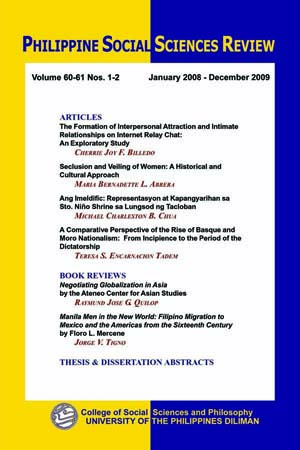Seclusion and Veiling of Women: A Historical and Cultural Approach
Abstract
A very select group of women existed in indigenous Philippine society which has hardly merited any account in history. These women were daughters of datus or rulers who were kept hidden in special rooms and were not allowed to be seen by any man. They remained secluded from society but their beauty and prestige were widespread. Their seclusion contributed immensely to their near-invisibility in history, except that their presence dominates the narratives of almost all the Philippine epics. In these epics, these secluded women are described in length, from their physical beauty to their abilities in the spiritual realm. The description of these young women, desired by warrior-heroes and rulers as their wives, are an uncanny guide in a closer reading of the historical texts where we find glimpses and hints of their presence once their characteristics are discovered from the epics. Even the description of the houses as well as the architecture of the Maranao house give evidence to the presence of these secluded young maidens. This paper utilizes the initial historical evidence available to show the presence of the binukot woman in indigenous society, weaving the narrative with those found in the epics and in ethnographic accounts in order to glimpse through the veil and reveal the binukot. However, it has only served to show how much she still remains secluded and veiled in history._________
* Associate professor of History and a faculty affiliate of the Tri-College PhD Philippine Studies Program at University of the Philippines Diliman. Email: bernadetteabrera@yahoo.com
Published
2009-05-06
How to Cite
ABRERA*, Maria Bernadette L..
Seclusion and Veiling of Women: A Historical and Cultural Approach.
Philippine Social Sciences Review, [S.l.], v. 60, n. 1, may 2009.
ISSN 2672-3158.
Available at: <https://journals.upd.edu.ph/index.php/pssr/article/view/1274>. Date accessed: 30 aug. 2025.
Section
Articles
Keywords
women; seclusion


